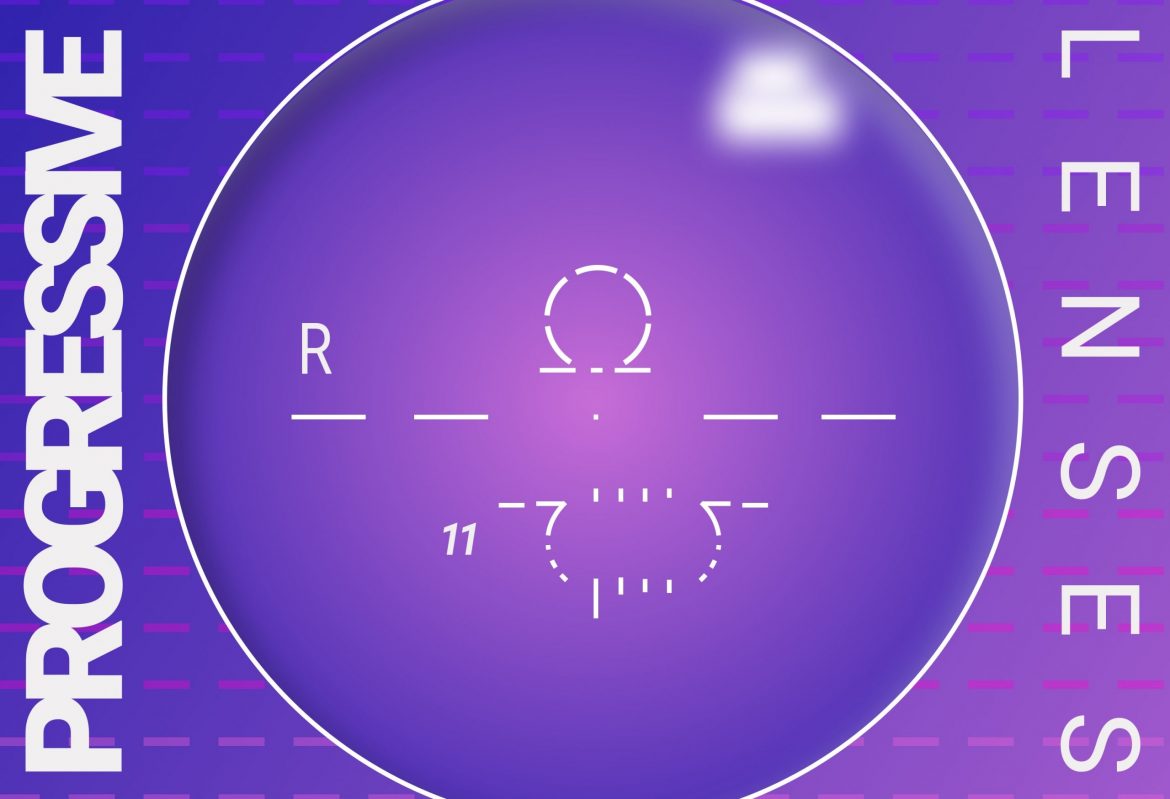18608 total views , 11 views today
Progressive lenses are a wonderful innovation in eyewear. But they’re not for everybody.
Progressive lenses are not bifocals (or trifocals)
Progressives give you line-free multifocal glasses.
The goal is to get a seamless progression from your lenses that deliver magnifying power for near and intermediate vision. Each lens changes gradually from point to point on the surface to provide the correct lens power for seeing clearly at various distances.
They differ from bifocals, which have only two lens powers—one for distant objects and one in the lower half of the lens—for vision correction at a specified reading distance. With bifocals, the different power zones have a clearly visible line across the center of the lens.
Progressive lenses don’t have this line. In fact, they’re sometimes called “no-line bifocals.” The truth is, progressive lenses offer a more advanced multifocal design than bifocals—or trifocals.
As wonderful as it may sound, progressives are not the right choice for everyone needing this type of vision correction.
Year after year, innovations in multi-focal lens technology make it easier for first-time wearers to adapt, but even with all the advancements, there are some reasons why progressives may not be a fit for you.
Are you considering trying progressives for the first time? We’ll look at the pros and cons of progressive lenses and answer some of the common questions so you know what to expect.
It takes time to adjust to progressive lenses
The average first-time progressive wearer can take at least a week or two to fully assimilate the changes in focal length. During this time, you may get frustrated and give it up. Users of progressive lenses are known to scrap the experiment and go back to what they know, typically, single-vision lenses.
If you have a lot on your plate at work, throwing progressives into the mix may compound the frustration. If possible, you may want to start wearing progressives at a time in your schedule where you can slowly work them into your daily routine.
Progressives take commitment
 Are you ready to wear glasses full-time? If the answer is no, progressives are not the right choice. I like to use the word “commitment” when introducing patients to progressives because they require much more dedication than single-vision lenses.
Are you ready to wear glasses full-time? If the answer is no, progressives are not the right choice. I like to use the word “commitment” when introducing patients to progressives because they require much more dedication than single-vision lenses.
Wearing progressives only when you feel that you need them will lead to an even longer adjustment period. Again, it usually takes a full-time glasses wearer a week or more to adjust to progressive lenses. If you choose not to wear them full-time, it may take a month or more.
Eye doctors have a saying: “We see with our mind, not with our eyes.” I mention this because no one struggles more with progressives than people that never used glasses full time in their adolescent years.
For those that were fortunate enough to never depend on them growing up, their mind never had to develop a tolerance for the distortion and chromatic aberrations present in all prescription eyewear. Progressives not only have vertical shifts in power but also horizontal shifts in clarity. First-time wearers of glasses may find it unacceptable.
There really is nothing your optician or eye doctor could do to make wearing progressives easier.
If you’re ready to make it work, you need to fully commit to progressives by ditching your single-vision distance and reading glasses for a couple of weeks to adjust.
There’s a peripheral vision adjustment, too
As I mentioned, progressives not only have vertical shifts in power, they have horizontal shifts in clarity. Thanks to today’s lens technology, the field of view is significant, but the outer edges of the lens do, in fact, introduce some distortion.
Most people will adjust to the distortion fairly quickly but some with high sensitivity in their peripheral vision simply can’t. Single-vision and line bi-focal lenses don’t have this type of distortion, so in some cases, they may remain the better option.
Progressive lenses are more expensive
Progressives have been around for long enough now that consumers have options at a variety of price points. However, like most things, you get what you pay for. Low-cost progressive lenses are bound to be inferior. In order to get the most advanced lenses, you can expect to pay a few hundred dollars.
I tell patients if they plan to wear their progressive glasses a few times a month, the cost is hard to justify.
Are progressive lenses right for you?
Well, you’re more informed now. The decision is definitely something you’ll want to discuss with your eye doctor.
Learn more about selecting prescription lenses with our free guide.



